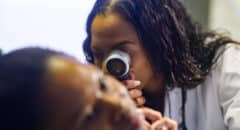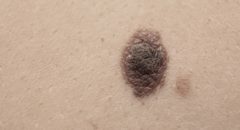 Having 11 moles or more on your right arm might indicate higher risk of melanoma, British researchers say.
Having 11 moles or more on your right arm might indicate higher risk of melanoma, British researchers say.
The study results could help doctors more easily identify patients at highest risk for the potentially deadly skin cancer, according to researchers from King's College London.
"The findings could have a significant impact for primary care, allowing [primary care doctors] to more accurately estimate the total number of moles in a patient extremely quickly via an easily accessible body part. This would mean that more patients at risk of melanoma can be identified and monitored," study lead author Simone Ribero, of the department of twin research and genetic epidemiology, said in a college news release.Between 20 percent and 40 percent of melanomas develop from pre-existing moles, the researchers said. The risk is thought to increase slightly with each additional mole on the body, but a total body count can be time-consuming in a doctor's office.
In a report published online Oct. 19 in the British Journal of Dermatology, Ribero's team analyzed data from nearly 3,700 white twins in the United Kingdom who underwent a mole count on 17 body areas.
The results showed that the mole count on the right arm was the most predictive of the total number of moles on a person's entire body.
Know Anyone With Prostate Cancer? Share This Message With Them Today
For example, women with more than seven moles on their right arm had a ninefold increased risk of having more than 50 moles on their body. Those with more than 11 moles on their right arm were more likely to have more than 100 moles on their body, putting them at higher risk for melanoma, the researchers said.
The area above the right elbow was especially predictive of the total number of moles on a person's body, according to the researchers. The number of moles on the legs was also strongly associated with total count, as were moles on men's backs.
Changes in the size, shape or color of a mole may be a warning sign of melanoma.
But the study only found an association between the presence of moles and melanoma risk. It did not prove cause and effect.
Copyright HealthDay News. All rights reserved.









